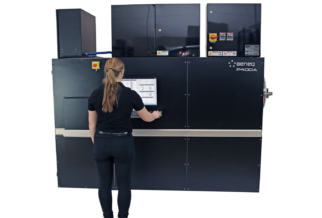ANTIREFLECTION COATINGS
Automotive Camera Lens Coatings
Safety is paramount for autonomous vehicles (AVs). As more OEMs introduce vehicles with increasing levels of autonomy, the margin of error of the accompanying sensor suite becomes slimmer and slimmer. For AVs using cameras, lens flare is a major cause of artifacts and ghost images, potentially leading to catastrophic consequences. Learn about how gradient-index antireflection coatings fabricated with Atomic Layer Deposition can reduce lens flare and increase the safety of automotive camera modules in AVs.
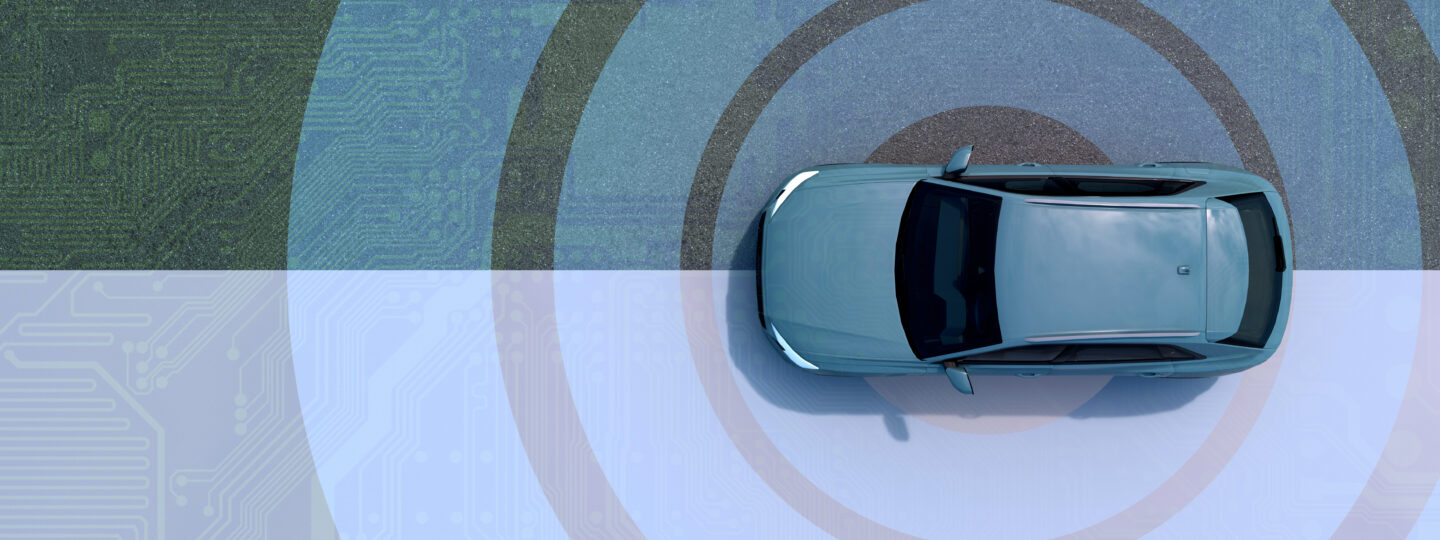
Why do we need sensors in autonomous vehicles?
For decades, humans imagined a future where our cars could drive themselves, allowing motorists to experience mobility in new ways: perhaps by relaxing on their trips with movies and snacks, or by squeezing in some extra work on their commute. Each year, this comes closer to reality, with a plurality of car manufacturers charging forward with autonomous driving features, with Tesla at the helm. In a recent report, McKinsey and Co. estimated that autonomous driving could comprise a $400 billion industry by 2035.
To achieve this, OEMs are equipping their vehicles with new detectors to allow them to “see” the surrounding environment and react to it in an efficient and safe manner. A range of sensors are deployed to achieve this from standard cameras to more advanced technologies such as, radar and LiDAR. These are already present in base level car features, like adaptive cruise control and lane assist.
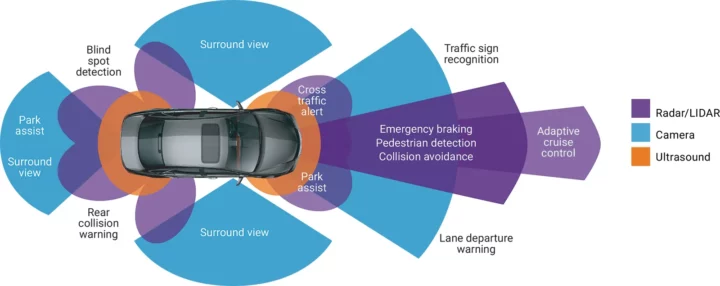
As the next generation of autonomous vehicles (AV) begin to hit the market, one issue is paramount: safety. OEMs will be under stringent requirements and strict scrutiny to show that their vehicles operate without error. There will be little room for error in the sensors and detectors feeding information to the “brain” of the car, making precision manufacturing technologies necessary to fabricate them.
Advantages of automotive cameras
One of the most widely used sensors in cars are cameras.
They are currently subject to intense debate, alongside LiDAR, over whether they constitute the best available technology for imaging an AV’s surroundings and porting that information to the vehicle’s computer.
Some companies, like Tesla, are currently exclusively using cameras as the imaging sensor on their AVs. Advocates for camera technologies believe that cameras attached to a neural network for processing the visual information is the best way to emulate what humans see when driving.
Regardless of opinions in the debate, cameras have some inherent advantages that make them desirable for autonomous driving. First, cameras can operate reliably in a wide range of weather scenarios. Since they receive light from the world, rather than emitting it itself, cameras can see anything a human could in inclement weather, such as rain or snow.
Second, cameras are relatively inexpensive. Camera technology has progressed rapidly over the last decade, resulting in high-quality imaging technology for a fraction of the price of alternatives, like LiDAR. Covering a car with 8-10 cameras becomes a trivial cost when compared to that of integrating multiple LiDAR modules.
Automotive camera coatings decrease edge cases
However, OEMs have a vested interest in ensuring peak performance of the devices and one of the major drawbacks of utilizing camera technology are what are known as edge cases.
Edge cases are rare events that can cause errors in the camera’s detection system, tricking the neural network into thinking something is either there when it is not, or mistaking one object for another. Despite their rarity, the potentially catastrophic consequences of such edge cases are not difficult to imagine.
One major cause of edge cases in camera systems is lens flare. Lens flare occurs when light in a lens is scattered or reflected in a lens system, resulting in artifacts or ghost images in the image. This is common when trying to take a photo with your mobile phone in bright light. In an AV, this artifact may be mistaken for another car, causing the vehicle to swerve in one direction to avoid it.
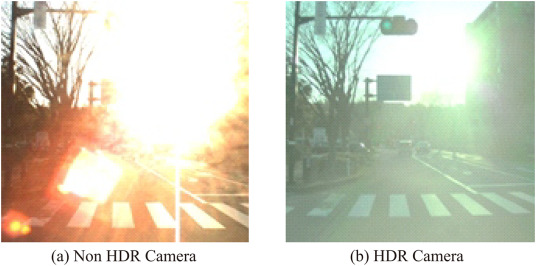
To combat lens flare and ghost images, antireflection coatings, or ARCs, are often used. An ARC essentially minimizes the amount of light reflected in the system through a series of destructive interferences, reducing instances of artifacts in images.
Decrease lens flare with antireflection coatings by atomic layer deposition
But what does this have to do with Atomic Layer Deposition?
We know that minimizing lens flare is critical to reducing the occurrence and risk of edge cases. With effective lens coatings, edge cases will be less common or even eliminated, leading to a much lower prevalence of potentially fatal driving errors.
Beneq recently discussed at length the use of ALD to deposit ARCs on lenses for use in mobile phone cameras to reduce lens flare. The antireflective properties of these ALD coatings are impressive, but aspheric lens geometry elevates the superior step coverage of ALD as a major advantage to enable camera lens coatings.
The ALD process is unique in that it deposits the same amount of material on all surfaces with 100% coverage. To truly minimize lens flare in camera systems, the antireflective coating must be uniform at all points on the lens.
Recently, Beneq has developed an innovative gradient-index antireflection coating solution, Beneq AtomGrass™, to help OEMs extract the best performance from their camera systems.
The new solution is a gradient-index, wide-angle, broadband antireflective coating with an average reflectance of less than 0.1% in the range of 380-1050 nm and a consistent performance up to an angle of incidence of 50 degrees.
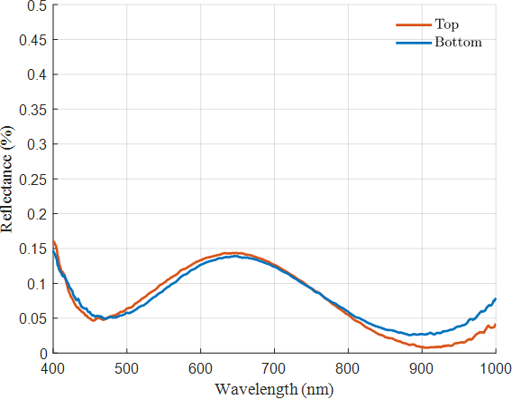
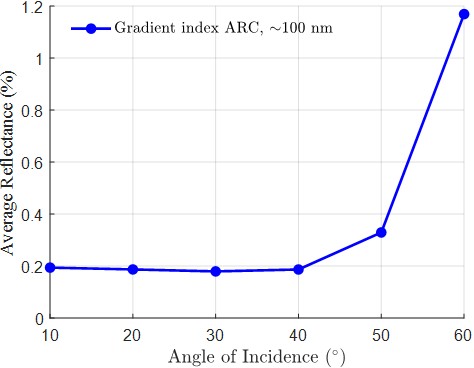
This wide-angle performance is especially important for automotive cameras since the stationary, aspheric lenses will always have light interacting at high angles of incidence.
And thankfully, the solution comes quick. With the Beneq C2R, ARCs can be fabricated extremely fast. For example, one AtomGrass™ coating can be deposited in less than 10 minutes.
Cameras in autonomous vehicles have everything to do with ALD. As more car manufacturers enter the autonomous driving space, the ones that prevail will be those that consumers trust the most to keep them safe.
ALD is the best solution on the market for reducing lens flare in automotive cameras, thus reducing the risk of catastrophic edge cases. With Beneq AtomGrass™, OEMs will better see the potential of their AVs, when their cameras see clearly.
Contact us here to explore how Beneq’s antireflection coating solutions can improve your products.
More information about Beneq’s ALD solutions and equipment can be found on the Optical Coatings page!

